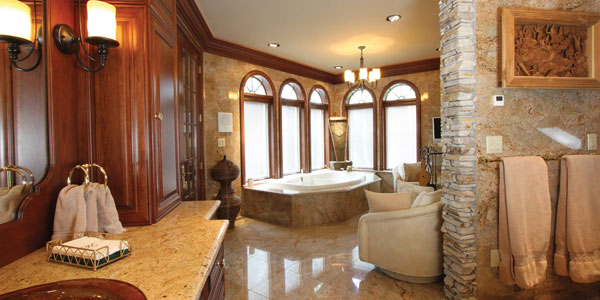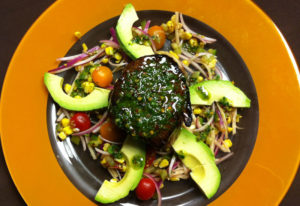|
Why is lighting so important?
Lighting is a key factor in any room. Its effects can literally “light up your life” or create “doom and gloom.” It can flatter people, furnishings and artwork or have the opposite effect. Artificial lighting must be considered along with natural lighting (windows, skylights, etc.). Color selections for your rooms should be made after checking how they look during both day and night – fixtures, high hats, lamps, sconces – all of which can be used in traditional and contemporary settings.
What varieties of lighting are there?
There are a variety of choices. When used properly, they help people see well and enhance furnishings. General lighting (diffused light) can be recessed (high hats or eye balls) with incandescent and fluorescent ceiling-mounted or suspended fixtures (many today have halogen light bulbs). Other options include: lamps for floors, tables and desks, ceiling fixtures, track and cove lighting. These direct and indirect lighting sources fulfill function as well as create special moods.
When is recessed lighting used?
Recessed lighting, the most popular kind used in many homes – both with traditional and contemporary architecture – creates overall lighting that is unobtrusive and can be placed to strategically light seating and task areas. It is not necessarily ideal reading light. Most need at least 6-9” of depth to install and are even made today for cathedral ceilings. Eyeballs, which have the capacity to swivel, can create more direct light on walls. High hats and eyeballs usually come in white, black, chrome and brass, and are most desirable when the lighting blends into the ceiling. They’re also used in conjunction with other ceiling mounted light sources, such as chandeliers.
Are ceiling fixtures “in”?
Chandeliers have become very popular, once again; with the reawakening of interest in traditional French and English furniture styles, as well as newer styles such as Tuscan. Beautiful antiques and reproduction pieces are available in varying price ranges. There are many contemporary glass, brass and iron fixtures as well as eclectic and neo-classic styles (a new twist to the old classical style). Ceiling fixtures can be used with different high hats or eyeballs and are most effective over dining, kitchen or game tables. Foyer areas, bathrooms and some master bedrooms can also benefit from ceiling fixtures, provided they stay with the feeling and style of the furniture or other light sources.
How do lamps and sconces enhance the lighting in a room?
Visual beauty in a room can be created by lamps and sconces, which fill the practical need of good reading light. They are available in many styles and finishes, both new and antique. Sconces (wall-mounted fixtures with gem boxes behind them), can also be practical light sources. For example, there may not be enough room for a table lamp or floor lamp (torchiere) beside a wing chair next to a fireplace. A wall sconce can create the perfect reading light and at the same time, fill a decorative need. The same is true for bedroom lighting. At times, night tables are too small or used for items other than lamps. Sconces or swing arm, wall mounted fixtures, are the perfect problem solver.
Table lamps create warmth in a room, which is not only due to their light giving potential. They soften the surroundings creating a glow that can enrich fabrics and wall coverings which ceiling-mounted fixtures cannot. They also illuminate desk areas and reading spaces more effectively.
|














 20 lucky winners will win $500 each in prizes totaling $10,000.
20 lucky winners will win $500 each in prizes totaling $10,000. 